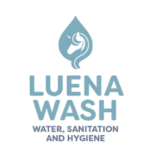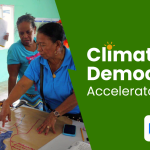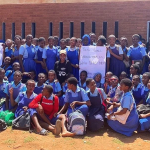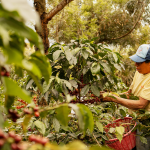Compiled by
Happy Tarumadevyanto | Independent Consultant | Environmental Asia | happy.devyanto@environmental.asia
Around 120.3 million hectares of state forest area, almost half (46.5% or 55.93 million hectares) is not managed intensively. Among these areas are 30 million Ha of forest under the authority of the Regional Government. Only around 64.37 million Ha (53.5%) of forests are managed quite intensively. The majority of intensively managed forest areas are production forests in the form of Business Permits for the Utilization of Timber Forest Products (IUPHHK) covering an area of 36.17 million hectares. Which is managed based on a natural forest system by 324 business units covering an area of 26.2 million Ha. Managed using the Ha system, as well as conservation forest groups totaling 534 locations covering an area of 28.2 million Ha. Source: https://www.menlhk.go.id/program/kph/


Based on report of Ministry of Environment and Forestry the realization of forest area determination until December 2022 is 99,659,996 Ha consisting of 2,328 units of Forest Area Determination Decrees. Specifically for 2022, as a form of seriousness in completing the accelerated confirmation of forest areas, a forest area of 10,006,045 hectares has been established, consisting of 179 decrees. There has been a significant increase in the area of forest area designation in the last 10 years to a total of 79.2% of Indonesia’s total forest area. Source: https://ppid.menlhk.go.id/berita/siaran-pers/7017/menteri-lhk-tata-batas-kawasan-hutan-selesai-tahun-ini

Greenhouse Gas Emission Aligns to Social Forestry
The forestry sector is an important part of achieving a reduction in greenhouse gas emissions of -140 million tons of CO2 equivalent in 2030 and is implemented through several structured approaches. Indonesia continues to improve concrete actions on climate change in order to achieve the target of reducing greenhouse gas (GHG) emissions by 29% without support (business as usual/BAU), and 41% with foreign support. One way is by actively contributing to the Asia-Pacific Rainforest Summit/APRS forum. It is estimated around 17% of the 29% GHG emission reduction target comes from the forestry sector, while the second largest sector is energy at 11%.
The government has taken several steps which have been implemented in several sectors, including Forestry and Other Land Uses (FOLU), agriculture, energy, waste processing, and Industrial Process and Product Uses (IPPU). In overall, GHG reduction efforts focus on the forestry and land use sectors.
Efficient Use of Financial Support for Forest and Land Use Programme
INDONESIA claims that financial support provided by the international community is used efficiently for environmental and forestry management.
In 2023, the Government of Indonesia and the Government of Norway signed a results-based payment (RBP) agreement in the framework of cooperation between the two countries in efforts to reduce greenhouse gas (GHG) emissions from the forestry and land use (FOLU) sector.
This agreement provides new hope for Indonesia’s efforts to achieve the FOLU Net Sink target by 2030. In the first payment agreement, Norway has paid US$56 million or around IDR 840 billion (assuming an exchange rate of 1 USD = 15,000 IDR) million.
The current achievement of Social Forestry access distribution is 4.8 million hectares in 33 provinces from the national target of 12.7 million hectares. Of this amount, customary forests cover an area of 1.1 million hectares. The designation of customary forests is aimed at provide living space for indigenous communities, and protect customary rights and local wisdom in protecting forests.
Is Social Forestry The Largest Contributor in Climate Change Adaptation?
“Social Forestry plays an important role in contributing to Climate Change and Net Sink FOLU 2030, it is considered and based on grass root, involve community living and nearby the forests, facilitating the stakeholder engagement includes responsible forest management.
The community gets benefits from there Therefore the Social Forestry program will protect the forest and also play a role in carbon absorption. “Social Forestry is also the key to improving the economy and conflict resolution This statement was delivered by Official Government Apparatus in an event of Social Forestry and Indigenous Communities: Promoting Local Leadership for Indonesia Net Sink FOLU 2030 in Climate Actions, in Jakarta, Thursday (4/11 /2021). https://ppid.menlhk.go.id/berita/siaran-pers/6275/perhutanan-sosial-dan-masyarakat-adat-promosikan-kepemimpinan-lokal-untuk-capai-folu-net-sink-2030
Domestic Financial Arrangement
During and after the Soeharto administration, weak financial management and inefficient management of fund revenues at various levels of government institutions have hampered the realization of effective use of DR. Several large investments using DR to develop forest plantations and rehabilitate damaged forest land often fail to achieve their objectives. The absence of effective monitoring and accountability mechanisms means that large amounts of funds intended for plantation development are lost through fraud, diversion for other uses or wasted on poorly managed projects. https://fiskal.kemenkeu.go.id/files/berita-kajian/file/Policy_Paper_Singgih_Riphat.pdf
One of the funds that entered Indonesia was a contribution agreement between the Environmental Fund Management Agency and Norway amounting to US$ 56 million. This is the first results-based contribution in 2022 for a verified reduction in emissions from deforestation and forest degradation of 11.2 million tons of CO2 equivalent for Indonesia’s performance in 2016-2017.
The forestry and land use sector is claimed to be the largest GHG contributor in Indonesia apart from the FOLU sector which can produce around 60% of carbon emissions, and the energy sector which can produce 36% of GHG.
The solution to reduce GHG that the FOLU sector is implementing can be seen from the positive trend in controlling land and forest fires. In 2020, the percentage of fire control will be 82%.
Then, the government has also implemented a mangrove forest rehabilitation process with a target of 600,000 hectares by 2024. Indonesia has big ambitions for the FOLU sector as a carbon net sink by 2030. This step is being taken to realize carbon neutrality in this sector.
Year 2023 is a good time for the Social Forestry Program in an atmosphere of limitations. Currently, the Social Forestry Program has achieved management access of 6,371,773.42 hectares, involving 9,642 Decree Units (SK) and providing direct benefits for 1,287,710 heads of families. In addition, the establishment of customary forests covering an area of 250,971 hectares, involving 131 SK Units, made a positive contribution to 75,785 heads of families. https://ppid.menlhk.go.id/berita/siaran-pers/7566/dari-perhutanan-sosial-untuk-hutan-lestari-dan-masyarakat-sejahtera
Land Use Permit for Social Forestry
The social forestry program with a target of 12.7 million hectares in several regions in Indonesia continues. The goal is to provide fair forest access for all levels of society. There is still a gap in access to forests between the community and the private sector or State-Owned Enterprises (BUMN).
The Ministry of Environment and Forestry (LHK) provides access to social forestry management to the community reaching 7.087 million hectares in May 2024. Meanwhile, the target for providing access to social forestry management in Presidential Regulation (Perpres) Number 28 of 2023 is 12.7 million hectares. in 2030. Minister of Environment and Forestry Siti Nurbaya said this area includes 10,232 units of social forestry agreements involving 1.3 million heads of families throughout Indonesia.
State-based Forest Resources
Forest resource management tends to favor a paradigm which has been the creation of a cultural frame of control (cultural control) over natural resources, especially state-based forest resources. The institutional form and its implementation are characterized by centralism, single management by departments, top-down approach, target orientation, macro planning, strict budgeting, security approach, and tend to apply many sanctions. Meanwhile, the management method has characteristics including rigidity, single goal, homogeneous, single product, single silvicultural system, and worker-employer relationships.
How to reconcile the interests of preserving forest resources with the welfare issues of approximately 21.6 million people in forest villages who are still on the poverty line. This is the situation faced by the government in forest development in Indonesia so far.
How Social Forestry Work

Decentralization Challenge
- Javanese forest typology. Research by the Java Forest Restoration Coalition (KPH) writes that there are various typologies of forestry agrarian conflicts. First, “forest” in which there are permanent settlements, yards, moors and rice fields. Second, land on the edge of the mangrove forest. Third, the land that still has forestry plants in between the main crops is processed and used by the community for food crops.
- Recently, news has spread that there are plans to implement the Special Management Forest Area (KHDPK) policy. This KHDPK will make Perum Perhutani return its management mandate to the state through the Ministry of Environment and Forestry (KLHK) of 1.2 million hectares.
- This step is a step forward in providing wider access and control to the community. Although in fact, if it wants to accelerate community prosperity and maintain forest ecosystems, the government could create a policy so that all management mandates are returned to the state and intended for the greatest prosperity of the people.
- Government has also scheduled of policy dialogues result dissemination that had been held recently, as exemplify: the Urgency of Protection and Recognition of Customary Law Communities in Natural Resource Management, Initiating the Concept of Non-Market Carbon in the Social Forestry area and Development of Forest and Land Based Community Enterprises with panelists who comes from the Ministry of Environment and Forestry, the Environmental Fund Management Agency and the Ministry of Villages.
- Representative of the National Management Board of the Indonesian Social Forestry Management Association (AP2SI) testified that social forestry really provides justice, comfort and tranquility for the community. The Ministry of Environment and Forestry was advised immediately to carry out outreach to villages together with social forestry assistants. This is important to prevent misleading information that might be occurring in society. The same thing was also conveyed by AP2SI representatives from West Java, Central Java and Banten. https://www.bernas.id/2022/08/153153/sambangi-klhk-elemen-masyarakat-pegiat-perhutanan-sosial-tegaskan-dukung-kebijakan-khdpk/
- ” In the past prior to social forestry’s introduction, the land cultivated by forest village farmers was only 0.083 hectares, the same as 830 square meters. Since introduction of Social Forestry, they received a decree from the President’s policy, their land ownership increased 10 times to 8,400 square meters on average,” said Prof. San Afri Awang. https://www.presidenri.go.id/siaran-pers/pelaku-perhutanan-sosial-program-perhutanan-sosial-tingkatkan-kesejahteraan-petani/
- AS an agrarian reform program, social forestry has been running for ten years by 2024 – if we begin looking at President Joko Widodo’s declaration in a national program. If we look at it as a practice, social forestry has existed long before, and was even initiated at the World Forestry Congress in Jakarta in 1978. What has changed and how has social forestry developed over almost a decade?
- Agrarian reform is a mandate of the 1945 Constitution through article 33 paragraph 3 that “The earth, air and natural resources contained therein are controlled by the state and used for the greatest prosperity of the people.” In the Nawa Cita program, agrarian reform is a government priority program that will develop from the outskirts of the territory of the unitary state of the Republic of Indonesia.
- One of the corrective steps in the forestry sector is increasing the active role of the community, the government has launched social forestry as a forest management system that is carried out fully by local communities or customary law communities to improve their welfare, maintain environmental balance and socio-cultural balance control in their environment.
- The Director of JKPP, Deny Rahadian, is looking at the issue of maps containing areas of state forest areas reserved for social forestry or called Social Forestry Area Indicative Maps (PIAPS). The determination of PIAPS is carried out by harmonizing the maps owned by the Ministry of Environment and Forestry (LHK) with maps of non-governmental organizations or other sources. Deny said that his organization had been invited by the government to harmonize maps, out of an area of 10 million hectares, 5.2 million had been harmonized. However, from this process only 2 million hectares can enter PIAPS. The community has difficulty in proposing areas to become social forestry because PIAPS requires that the proposed area must be clean and clear (CnC). There must be no overlap with permits valid in the area. https://www.hukumonline.com/berita/a/ada-kendala-dalam-pelaksanaan-perhutanan-sosial-lt59cdb7caef033/
- IBC researcher, Maryono, for example, calculated that the amount of budget provided by the government for social forestry programs is very low and has an impact on achieving targets. He noted that in the 2015-2017 period there were around 510 thousand hectares of social forestry that were realized in the form of permits or MoUs. Even though the RPJMN targets that within that period it should be able to reach 7.62 million hectares. In line with this, the budget allocation provided by the government to provide access to social forestry management is very minimal. During 2015-2017 the budget for preparing social forestry areas averaged IDR 38.76 billion every year. https://www.hukumonline.com/berita/a/ada-kendala-dalam-pelaksanaan-perhutanan-sosial-lt59cdb7caef033/
Therefore decentralization, forest management rights are returned to local governments. Unfortunately, this situation has resulted in contradictory situation between land use permits issued by the central government and regional governments. Overlapping forest management permits have been also adding to the conservation efforts challenge.









